Katie Byerly of Cerro Gordo County is also known as Iowa Prairie Girl on YouTube.
Have you ever noticed that some flowers have fun nicknames, while others have none? Old farmers know Marsh marigolds as cowslips. Soapwort is also called Bouncing Bet, and then there’s Common mullein . . . also known as cowboy toilet paper, flannel leaf, Quaker’s rouge, and Aaron’s rod, to name a few.
On the other hand, some wildflowers have few nicknames. Asters and Goldenrod come to mind. Perhaps that is because both these wildflowers come in many varieties, which are hard to differentiate. I imagine our forefathers may have felt the same way I do. . . another #%! aster. Heck, even Sylvan Runkel didn’t take time to recongnize all the asters and goldenrods in either of his Wildflowers of the Tallgrass Prairie or Wildflowers of the Iowa Woodlands books.
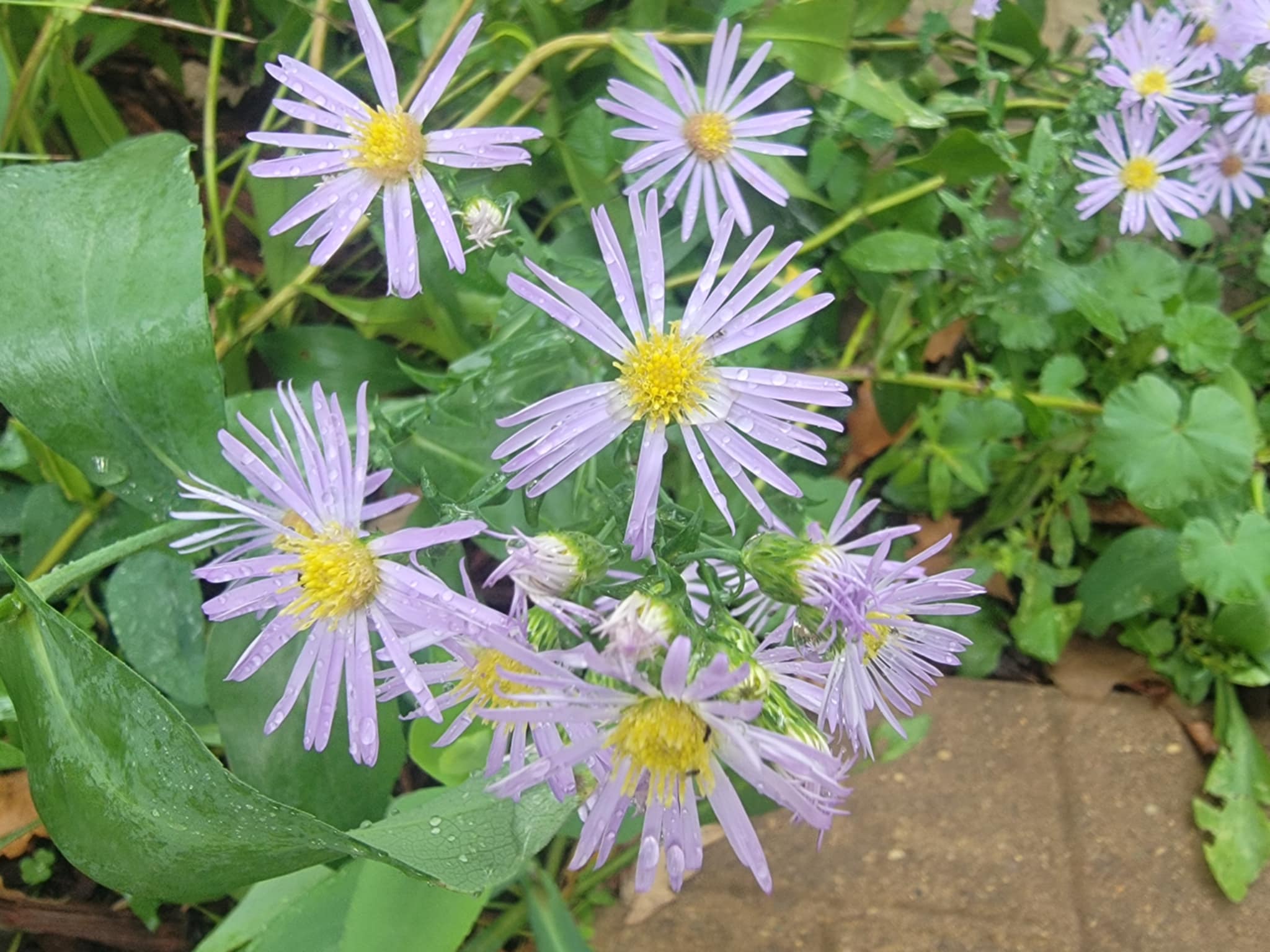
I have good news, though: one aster is easy to identify! Similar to Stiff goldenrod, Smooth Blue Aster has an easy tell: look for the smooth, clasping, light green-blue leaves.
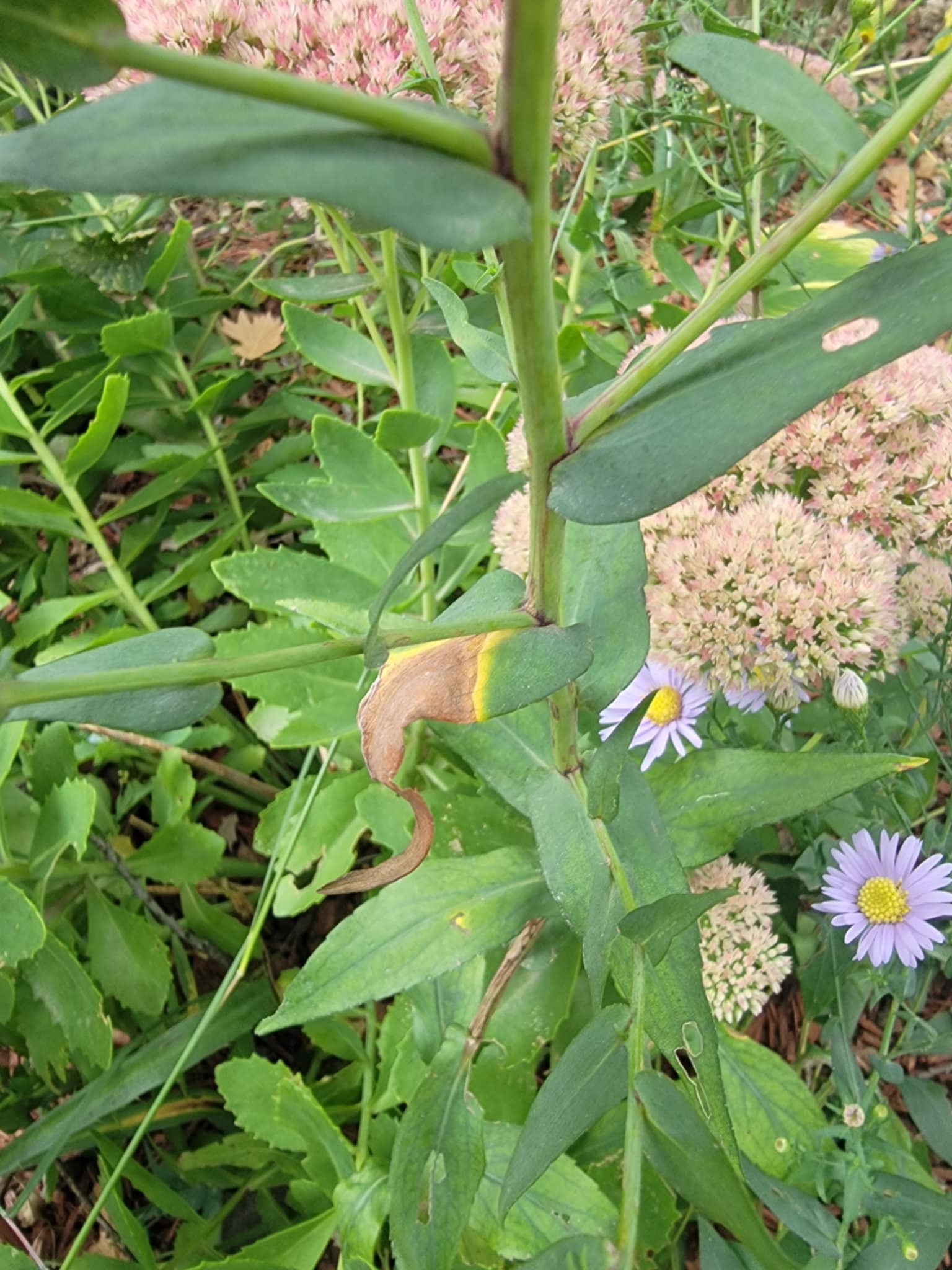
A clasping leaf is a leaf that, at its base, wraps around the plant’s stem. The smooth blue aster’s smooth, hairless leaves grow alternate on its equally smooth and hairless stem.
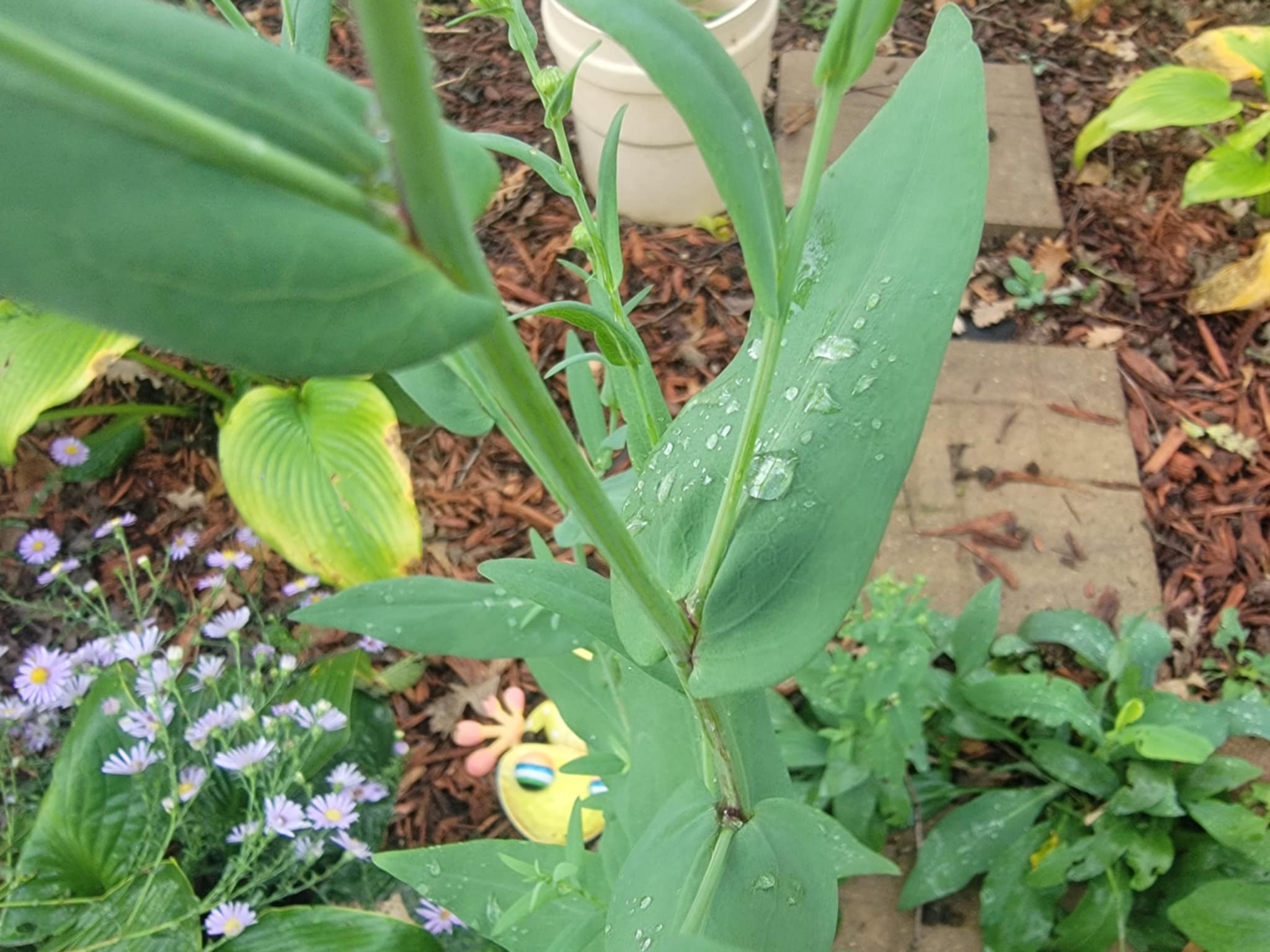
The waxy leaves are a dull grayish-green or blue color. Water beads on the leaves show just how waxy the leaves are. The oblong or long oval leaves become smaller towards the top of the plant. The edges of the leaves are, of course, smooth or toothless.

The back side of the leaves are a light green and show the leaves veining.

In direct sunshine, the plant will stand erect. In partial shade or when heavy with flowers, Smooth blue asters may droop from the weight or lack of sun. Beautiful loose branching clusters of flowers top the plant, with smaller clusters spreading from lower stems.
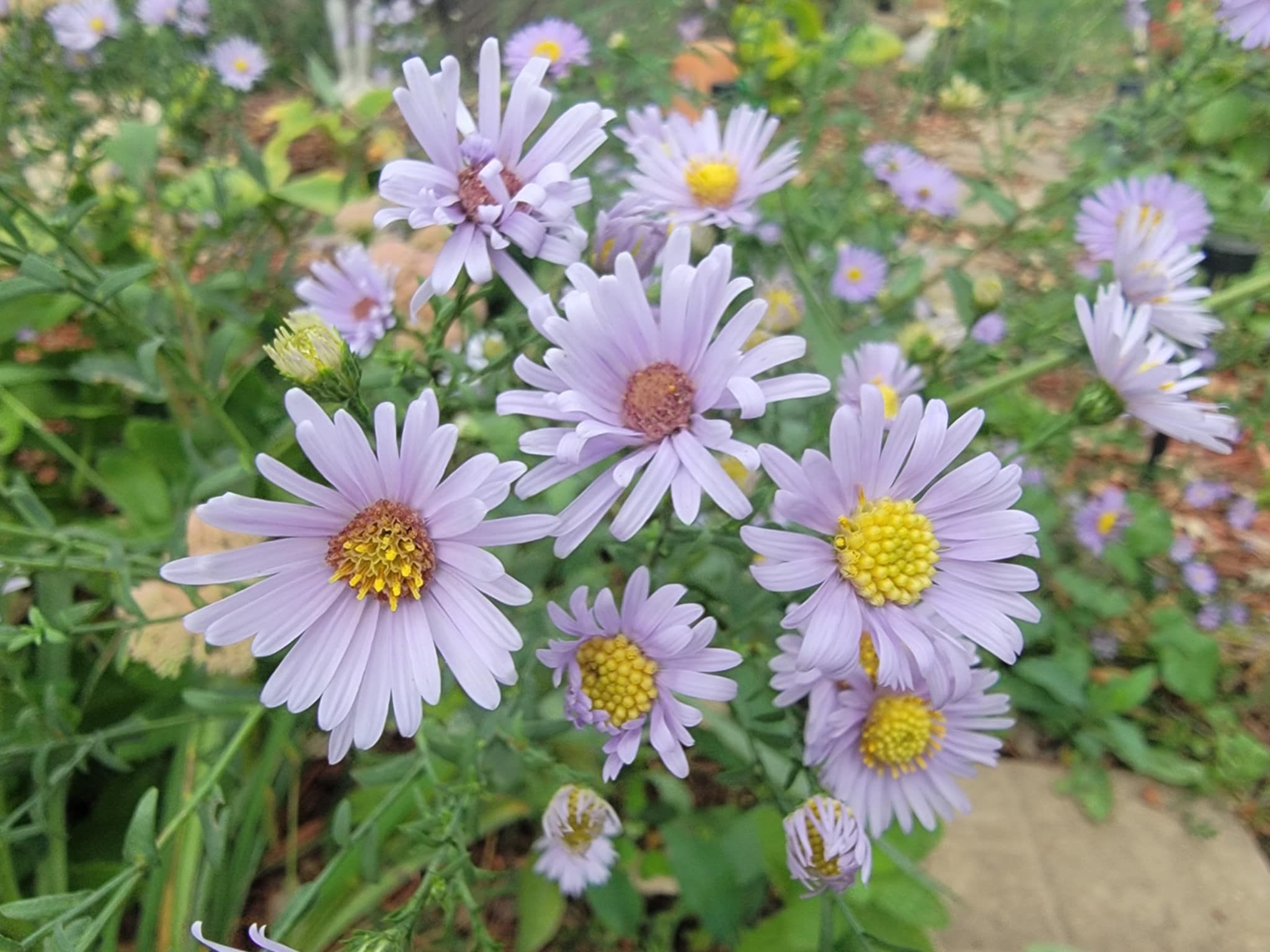
These fun, bright panicles are made up of light lavender or light blue-violet flowerheads. Each flower is one-half to 1 inch across and is composed of 15-30 ray petals. The vibrant flowerhead gives the aster one of its few common names.
Aster is a Greek word meaning “star.” That refers to the star-like shape of the flower and its bracts. This is how we get the nicknames “starwort” or “starflower.”


The aster’s flower center consists of densely packed disk florets. These florets start out yellow in color.

As the flower matures, the center florets turn a burnt red color.
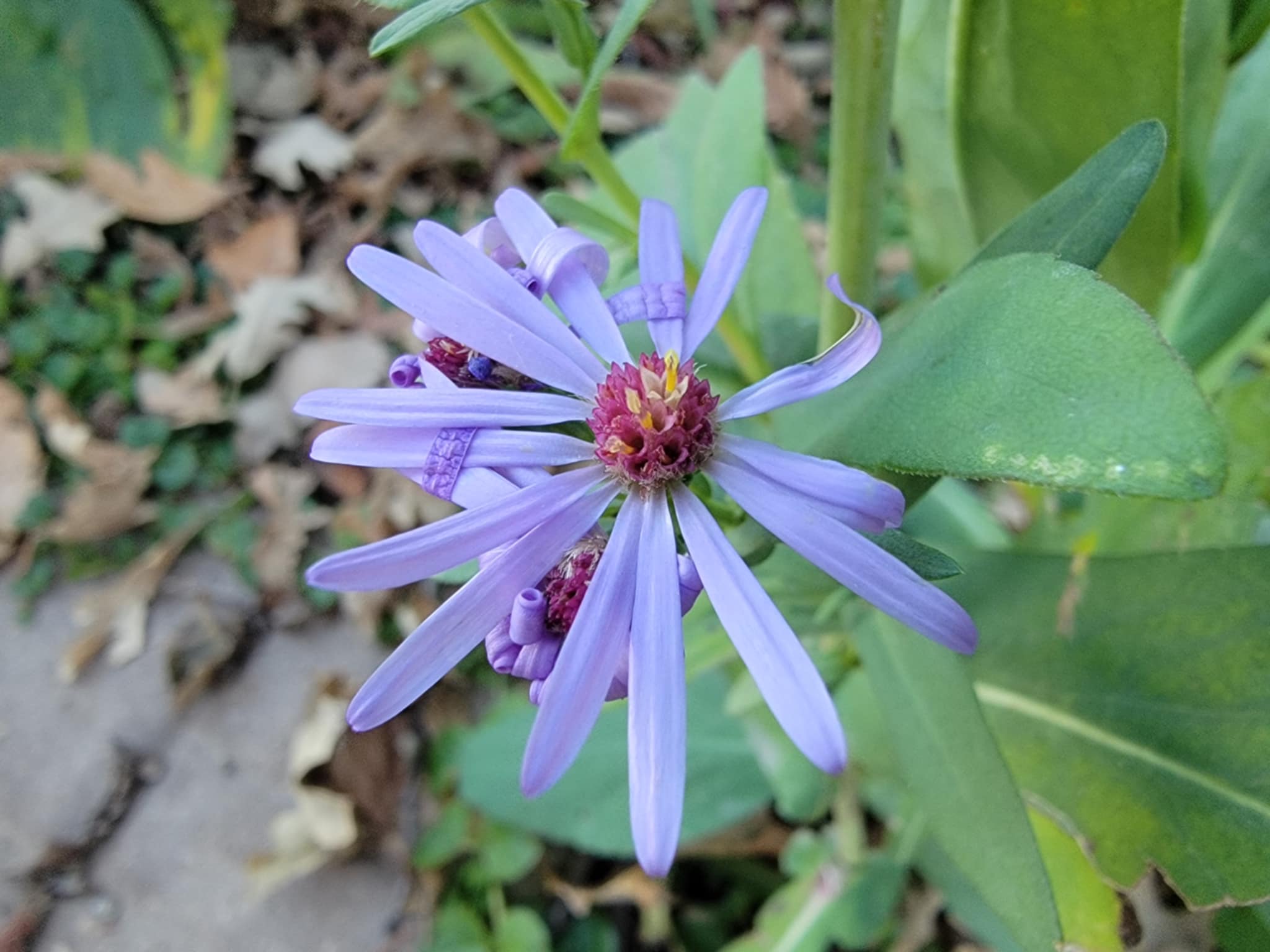
Plant identification also involves looking at the back of the flower, where the flower’s bracts are. Field guides will tell you to look at the phyllaries surrounding the base of the flower. On a Smooth blue aster there will be 4-6 layers of phyllaries. Each will come to a diamond-shaped tip with a red dot on the tip. Here is an image of the Smooth blue aster bracts/phyllaries. If I’m to the point of needing the bracts to identify the plant, I’m going to go with #%! aster.

Another sure way to identify asters is to plant them yourself. All the Smooth blue aster images in this post are from plants I planted in my yard last summer. I purchased the plants from SuperFresh Garden store in Austin, Minnesota. SuperFresh sells native wilflower plants, which they start from seeds purchased from Prairie Moon Nursery in Winona, Minnesota.

Frostflowers are another rare nickname for asters, alluding to their late blooming season. The Smooth blue asters in my garden started blooming in September and were a lovely fall bouquet and late summer treat for the pollinators in my yard. There wasn’t a day in September when there wasn’t some type of bee on my Smooth blue asters.

Smooth blue aster is the host plant for Pearl crescents and Silvery checkerspots. Although I never saw either one on my asters, I did observe many Pearl cresents in my yard. Here is an image of a Pearl cresent on a zinnia.

As of today, October 28, a few flowers remain on my plants. The spent flower heads have turned into dry light brown seed tufts, which will get carried away in the wind or (I hope) fall to the ground, expanding my current aster plot.
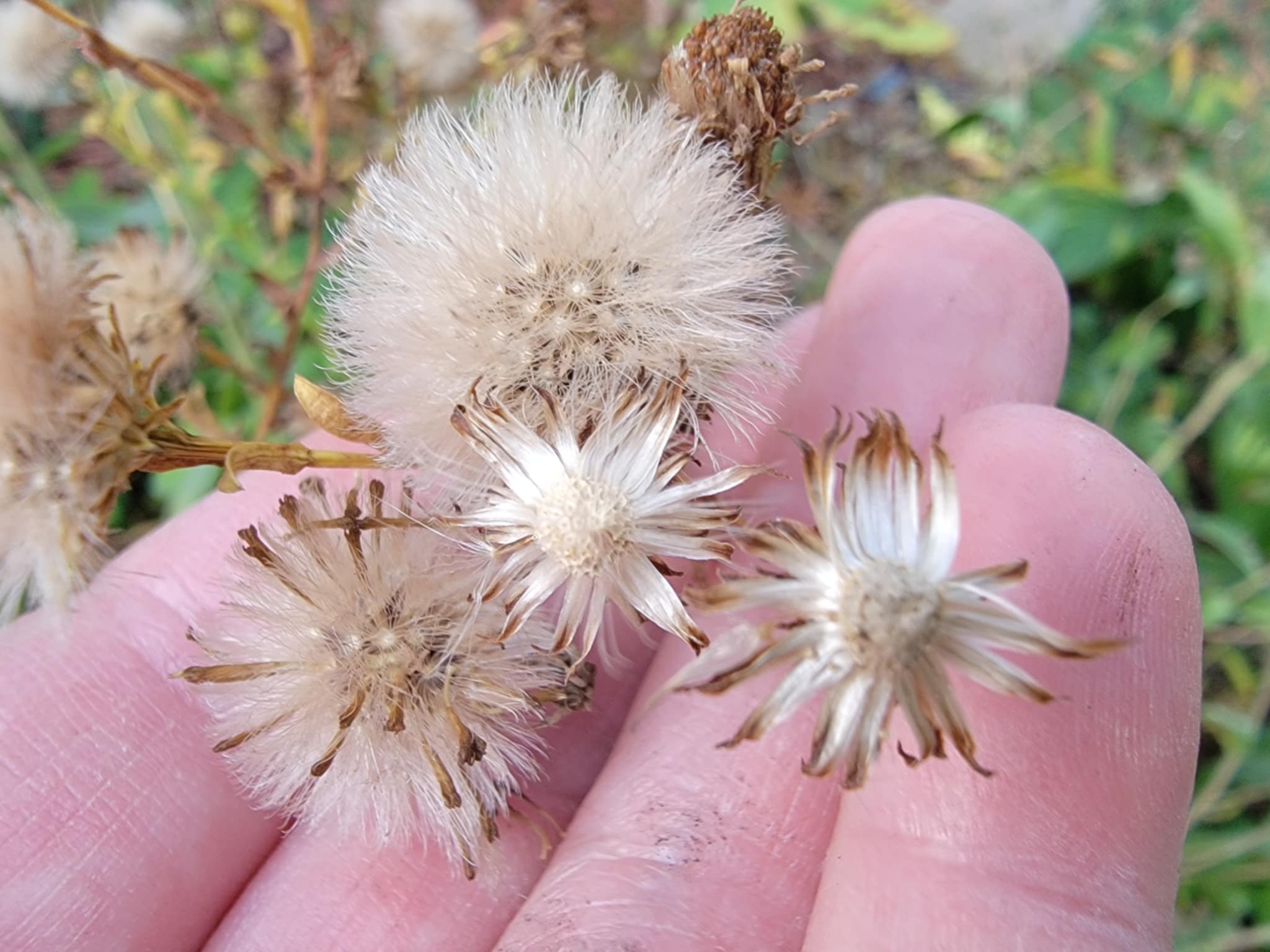
If you would like to see pollinators in action on my Smooth blue asters, check out my Iowa Prairie Girl YouTube channel video.


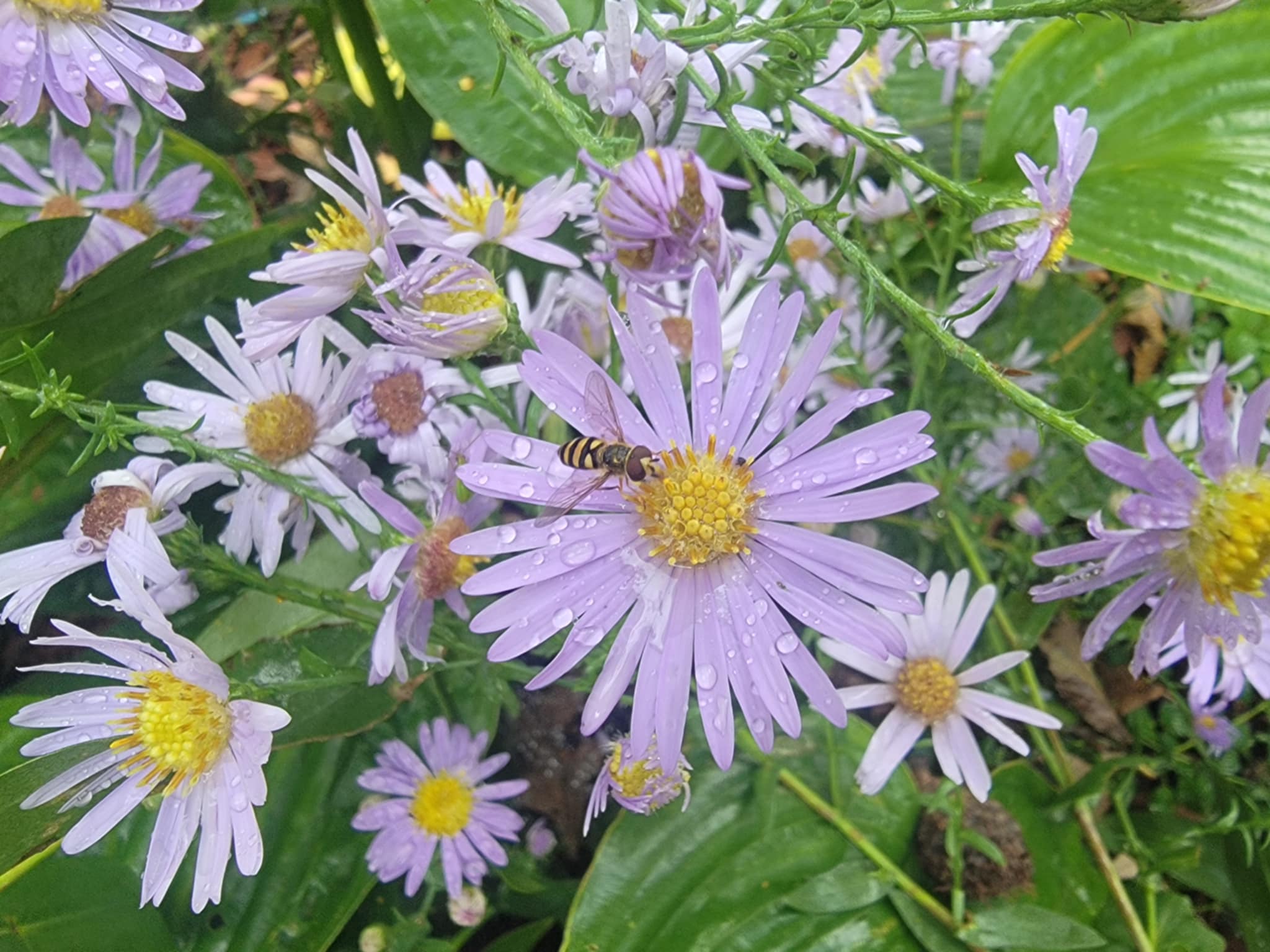
1 Comment
I'm agog at the happy bumble bees in these photos and in the video!
The bumble bees are as beautiful as the asters! I’m wondering what species they are. It is possible now to post bumble bee photos on bumblebeewatch.org and have them IDed by professionals. Researchers want to know more about which bumble bee species are found in which regions of Iowa, and submitting photos can help bumble bee conservation work. Thanks, Prairie Girl, for this nice post!
PrairieFan Thu 6 Nov 12:15 AM